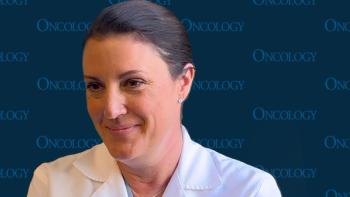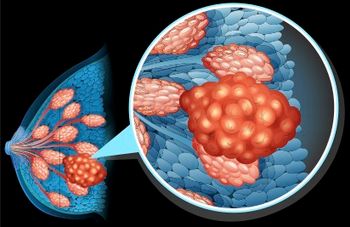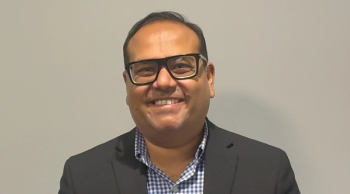
Oncology NEWS International
- Oncology NEWS International Vol 5 No 8
- Volume 5
- Issue 8
Practice Guidelines May Lead to Fewer Malpractice Suits
PHILADELPHIA--At Long Beach Community Medical Center, the addition, in 1993, of a new radiation therapy facility and a new cancer center spurred the development of clinical pathways (or practice guidelines) for radiation therapy and breast cancer.
PHILADELPHIA--At Long Beach Community Medical Center, the addition,in 1993, of a new radiation therapy facility and a new cancercenter spurred the development of clinical pathways (or practiceguidelines) for radiation therapy and breast cancer.
A study by Robert H. Goebel, MD, a radiation oncologist at theCenter who is also a law student at Thomas Jefferson School ofLaw, San Diego, provided one important rationale: The use of pathwaysmay reduce malpractice suits by favorably modifying physicianbehavior.
"Our study suggests that the potential savings from malpracticesuits would be significant," Dr. Goebel said in his presentationof the findings at the American Society of Clinical Oncology meeting.
The study analyzed retrospectively whether malpractice lawsuitverdicts would have been changed as a result of instituting aclinical pathway. A plaintiff in a malpractice suit must provethat the standard of care was not met and also that the breachof the standard of care caused damages. Therefore, verdicts fora plaintiff would change if the doctor had merely met the standardof care as defined in a clinical pathway.
On the other hand, verdicts in favor of the doctor would changein favor of the plaintiff if the introduction of a clinical pathwaychanged the standard of care. However, even in these cases, proofof causation of damage would still be required. "This causationproof makes it very difficult for a lawsuit in favor of a doctorto be changed," Dr. Goebel said.
The methodology used in the study "basically matches thestandard of care as defined by the guideline with the lawsuits,"he said. For breast cancer, Dr. Goebel and his co-author MichaelGoe-bel, of the University of Nevada, Reno, compared Californiaverdicts, found by a search of the LEXIS and WESTLAW legal databases,with the Blue Cross/Blue Shield breast cancer guidelines of March,1994.
For radiation therapy, the same databases were searched nationally,and the guidelines developed at Long Beach Community Medical Centerwere applied.
For breast cancer, the search located 119 lawsuits, with awardsof $17,580,182 in 67 cases decided for the plaintiffs. The analysisshowed that had the clinical pathway been followed by the defendantdoctors, 52 verdicts would have changed for total savings of $13,112,446.Had these suits not been brought as a result of compliance withthe pathway, at least 69 days of court time would have been saved.
For radiation therapy, the search uncovered 133 lawsuits withplaintiff recoveries of $39,141,734 in 79 cases. Had the pathwaybeen followed, 28 lawsuits would have been avoided for total savingsof $19,755,858, and if trial had been avoided, 19 days in courtwould have been saved.
"Comparing the cost of drafting a guideline with the savingsshown in this study suggests that guidelines are very cost effective,"Dr. Goebel said.
The Other Side of the Coin
The study also asked if the introduction of guidelines into evidencewould have led to reversal of verdicts found in favor of the defense(52 breast cancer cases and 57 radiation therapy cases). A comparisonof the clinical pathway with the actual performance by the physicianshowed that the standard of care was met in 10 of the breast cancercases and 19 of the radiation therapy cases; thus, these verdictsin favor of the physician would not have changed.
"This is not to say that these are the only cases that wouldhave stayed the same had the standard of care defined by the pathwaybeen introduced as evidence," Dr. Goebel said. The dismissalswould also have been maintained in 35 breast cancer cases and27 radiation therapy cases, largely because of other mitigatingfactors; ie, no direct causation was found in 24 of the breastcancer verdicts, and the statute of limitations had expired in13 radiation therapy cases.
"We can see, however, that there is a potential price tobe paid for adoption of clinical pathways into evidence,"he said. There were potentially 7 breast cancer suits and 11 radiationtherapy suits in which the verdict might have been changed infavor of the plaintiff. "This, of course, assumes that thedefendant doctors would not have changed their behavior despitethe institution of guidelines," Dr. Goebel added.
A member of the ASCO audience argued that 100% compliance withguidelines is unrealistic, and expressed the worry that if guidelineshad been in effect during the study time period, additional lawsuitsmight have been brought due to noncompliance.
Dr. Goebel agreed that compliance with guidelines raises a problem,"but I think that if this approach to melding medicine andlaw is to be taken, it has to be taken with the idea that therewill be some mechanism to provide sufficient physician behaviormodification so that these problems do not occur."
In response to a question about how courts will handle the issueof competing guidelines, Dr. Goebel pointed out two possible mechanismsfor introducing guidelines: by judicial notice or simply as evidence.
Judicial notice means that the court accepts the guideline asthe one and only standard of care, he said. If there are two ormore competing guidelines (as has been the case with autologousbone marrow transplantation for advanced breast cancer, for example),the court could accept all of the competing guidelines into evidenceand let the jury determine which is the most acceptable, justas juries do with the testimony of expert witnesses.
A Lawyer Responds
The discussant for the study was Sam Turner, of Fox, Bennett &Turner, who serves as counsel to the American Society of ClinicalOncology (ASCO) in Washington, DC.
Mr. Turner said that the potential cost savings from increaseduse of clinical pathways "is undeniable," but he believesthat much of this savings would come from reductions in defensivemedicine practices, not reductions in litigation.
He noted that the legal system is a "thicket of inefficiencies,"and that efforts to try to make it more efficient through theuse of guidelines probably will be much more difficult than Dr.Goebel's data suggest.
"Certainly guidelines are no magic bullet; they will not,by themselves, eliminate liability," Mr. Turner said, "butif used successfully, guidelines will shift the question in muchmalpractice litigation from, 'What is the community standard ofcare?' to 'Did the particular physician in this case meet thecommunity standard as exemplified in clinical pathways?'"
Mr. Turner also pointed out that guidelines may be consideredas "hearsay evidence" and, to be introduced into court,would require an exception to the hearsay rule, most likely, the"learned treatise" exception.
Under this exception, an expert witness must appear in court."In other words," he said, "if the defendant relieson guidelines to support his actions, he must line up expert witnesses,presumably from among the people who developed the guidelines,to come into court, vouch for their authenticity, and describehow they were developed."
Furthermore, Mr. Turner argued, the use of judicial notice tostreamline the introduction of clinical pathways into court maynot be acceptable in a legal environment that has "a deep-beddedresistance to taking decisions about facts away from juries."
He pointed out that a judicially noticed fact must be one thatis not subject to reasonable dispute; thus, if there is any significantdifference of opinion in the medical community as to a practiceguideline's validity, judicial notice may not apply.
Although the study showed that practice guidelines have the potentialto reduce litigation costs, a more important finding, Mr. Turnersaid, is that adherence to guidelines holds out "the possibilityof improved quality of care, decreased patient suffering, andimproved physician/patient relationships."
Articles in this issue
over 29 years ago
Chemo Improves Pain Relief in Advanced Prostate Cancerover 29 years ago
NCCR Urges Congress to Support Senate Bill for Cancer Researchover 29 years ago
Researchers Propose New Treatment Guidelines for HIVover 29 years ago
Salvage Cryotherapy for Prostate Cancer Studied at M.D. Andersonover 29 years ago
FNA Dropped From RDOG Study Due To High Rate of Insufficient Samplesover 29 years ago
New Thinking on HIV Progression Leads to New Strategiesover 29 years ago
Hospitals Told Not to Capitate for 'Wrong' Reasonsover 29 years ago
More Study Needed of Possible Carcinogenesis of Winter Gas Additiveover 29 years ago
President Makes NCAB AppointmentsNewsletter
Stay up to date on recent advances in the multidisciplinary approach to cancer.























































































